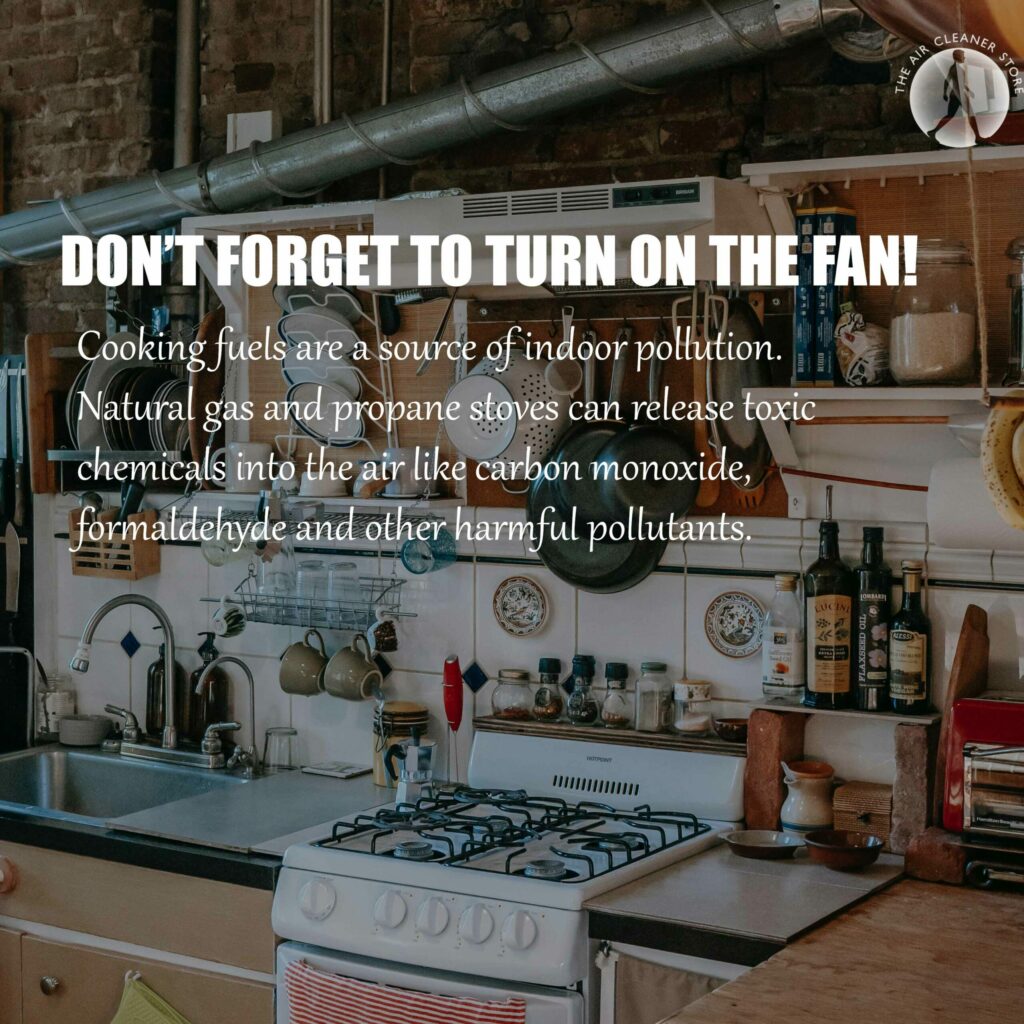Is there anything more enticing than the aroma of a favorite dish simmering on the stove? That could explain why so many people adore home-cooked meals. Cooking has helped humans to connect with loved ones and care for family members throughout history.
Could cooking however, be a source of pollution within your home?
Over three billion people in the world still cook with open fires with little or no ventilation. According to the World Health Organization, exposure to indoor toxins in these homes causes over 3.8 million premature deaths per year due to asthma, heart disease, and other illnesses. It’s a tragic and terrifying reminder of the risks of indoor cooking and the value of proper kitchen ventilation.
In this article we will explore some of the potential sources of indoor air pollution in your kitchen and what you can do to protect your home air quality.
Home air pollution vs. outdoor air pollution
Our homes are made to shelter us. While it’s walls and rooftops do a good job of protecting us from the rain, cold, wind and extreme heat, they also keep airborne pollutants inside.
EPA states that indoor air quality is three to five times worse than outdoor air quality. Kitchen and cooking fuels are main contributors to harmful indoor air.
The layout of your home can play a big role in determining the airflow and overall air quality.
If your home has an open floor plan where the kitchen meets the living areas, people in the living and dining rooms can be exposed to airborne pollutants created while cooking.
Type of pollutants and sources of pollution in your kitchen
Different heating methods used in cooking produce different airborne emissions.
These gases, as well as particulate matter (PM), can be hazardous to your health. Even if you only cook once a week on a gas stove, your kitchen could contain pollutant levels that the EPA would consider extremely dangerous if otherwise found outdoors. This means that you and your family could be exposed to nitrogen dioxide, formaldehyde, and carbon monoxide levels that are higher than federal standards.
Sources of air pollution in your kitchen are :
- Stove – Carbon dioxide, carbon monoxide, nitrogen dioxide, formaldehyde, and particulate matter are all generated by natural gas and propane stoves during use.
- Oven – Gas ovens can generate pollutants including particulate matter and formaldehyde. Both gas and electric self-cleaning ovens emit pollutants into the air. According to the EPA, when food waste is burned, potentially dangerous levels of particulate matter, nitrogen dioxide, carbon monoxide, and formaldehyde are released into the kitchen air.
- Toasters, deep fryers and other heat producing kitchen appliances also contribute to indoor air pollution.
Although the oven and stove are the most significant sources of airborne contaminants during cooking, many other appliances that use heat, such as toasters and deep fryers can also release particulate matter and VOCs. This is especially true for infrequently used appliances, since the system burns away any dust that has accumulated on the surface, which results in the release of airborne particulate matter.
According to a recent study the cooking activities that cause the most indoor air pollution are deep frying, and browning. Boiling water, baking, making popcorn, broiling with a gas range were all found to dramatically increase indoor ultrafine particle concentrations.
What you can do to help protect you and your family from the harmful cooking emissions?
We are not suggesting that you should give up cooking and switch to take out. While it is true that indoor air pollution levels can easily rise when you cook, making thoughtful kitchen choices, especially when it comes to ventilation, will help you maintain your home’s air quality.
Here are some of the changes you can make to keep maintain cooking pollution under control:
- Use an electric stove instead of a gas one.
- If you use a gas stove, you can have it tested for carbon monoxide and gas leakage once a year.
- Increase ventilation in your kitchen (turn on the kitchen hood and open windows more frequently).
- Increase airflow and ventilation in your home.
- Invest in a high quality air cleaner.
- Try not to burn food.
- Thoroughly clean heating kitchen appliances that are not used so frequently.
- Try and keep your stove and oven clean from food debris.
